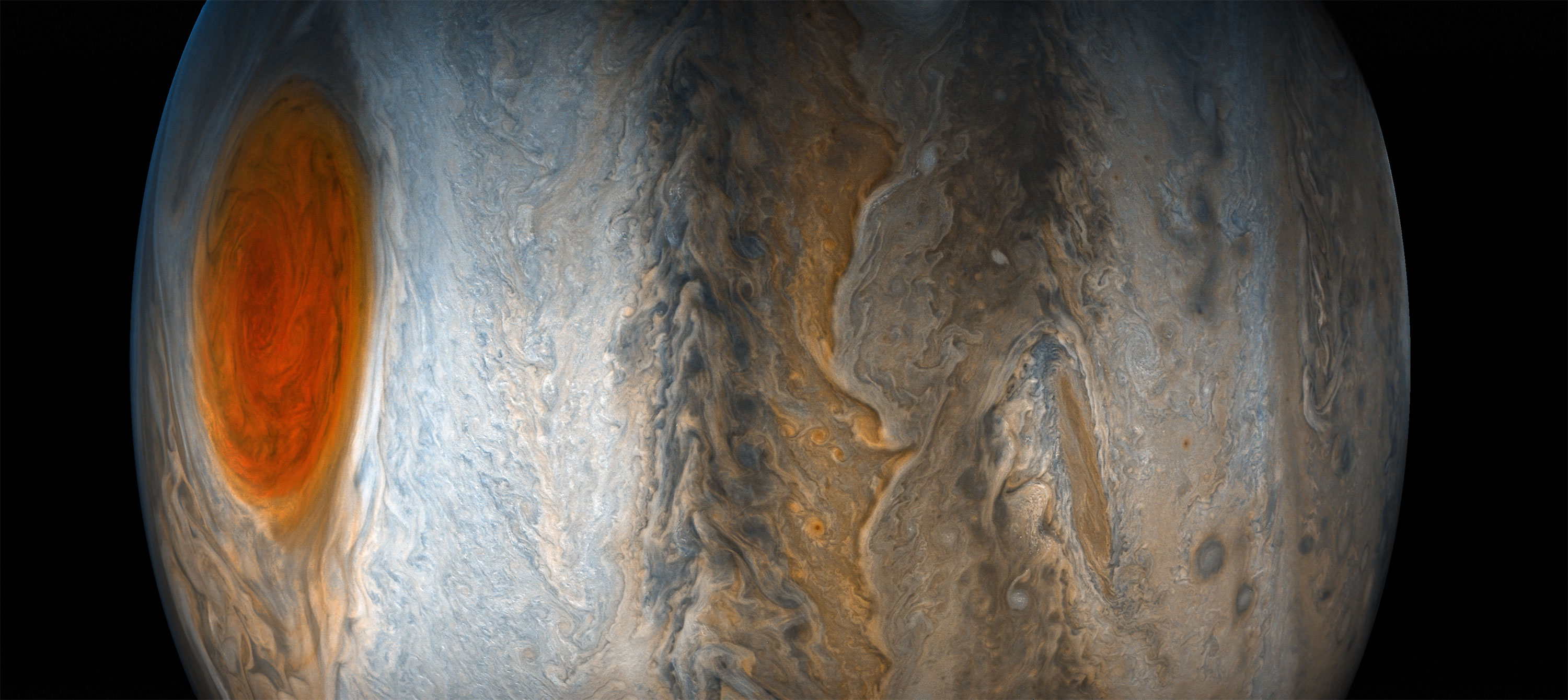

How it works: Using a high-gain antenna and a radio transponder onboard, Juno pings NASA’s Deep Space Network in Goldstone, California, as it orbits Jupiter. How we use it: The microwave readings reveal what Jupiter’s atmosphere is made of, including ammonia, water (and thus oxygen, which is made of hydrogen and oxygen), as well as its temperature at multiple depths.

It measures microwaves coming from deep within the planet’s atmosphere, penetrating to a depth of around 340 miles (550 kilometers). How it works: This instrument’s six antennas can see through Jupiter’s clouds - a talent the spacecraft’s namesake, Roman goddess Juno, is said to have possessed. That’s when its formidable array of science instruments kicks in: Microwave radiometer (MWR) But on closer passes, every 53 days, Juno cuts within 3,100 miles (5,000 kilometers) of Jupiter’s cloud tops. At their widest point, these carry Juno far from the giant planet and its moons, keeping it mostly clear of heavy radiation regions. Some 66 feet (20 meters) wide, the Juno spacecraft is a dynamic engineering marvel, spinning to keep itself stable as it makes sweeping elliptical (oval-shaped) orbits around Jupiter. “Many times, citizen scientists will skip over the potential scientific applications of an image entirely, and focus on how Juno inspires their imagination or artistic sense, and we welcome their creativity.High above Jupiter’s roiling clouds, three giant blades stretch out from a cylindrical, six-sided body. “Juno’s citizen scientists are part of a global united effort, which leads to both fresh perspectives and new insights,” said Candy Hansen, lead co-investigator for the JunoCam camera at the Planetary Science Institute in Tucson, Arizona. Small-scale texturing of the surface in the image needs to be carefully studied to distinguish between features and artifacts from processing, but the image draws us deeper into Europa’s alien landscape. An example of the results can be seen in the lower right of the enhanced image, where the pits and a small block cast notable shadows. In the image at right, processed by Navaneeth Krishnan, the enhanced color contrast causes larger surface features to stand out more than in the lightly processed version of the image (left).

JunoCam images processed by citizen scientists often straddle the worlds of science and art. These latest images from Europa do just that, pointing us to surface features that reveal details on how Europa works and what might be lurking both on top of the ice and below.” They are a crucial part of our team, leading the way by using our images for new discoveries. “During each flyby of Jupiter, and now its moons, their work provides a perspective that draws upon both science and art. “Starting with our flyby of Earth back in 2013, Juno citizen scientists have been invaluable in processing the numerous images we get with Juno,” said Scott Bolton, Juno principal investigator from the Southwest Research Center in San Antonio. By processing raw images from JunoCam, the spacecraft’s public-engagement camera, members of the general public have created deep-space portraits of the Jovian moon that are not only awe-inspiring, but also worthy of further scientific scrutiny. Citizen scientists have provided unique perspectives of the recent close flyby of Jupiter’s icy moon Europa by NASA’s Juno spacecraft.


 0 kommentar(er)
0 kommentar(er)
